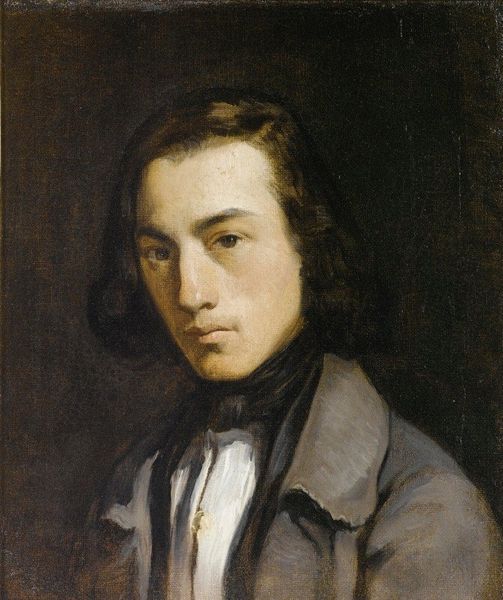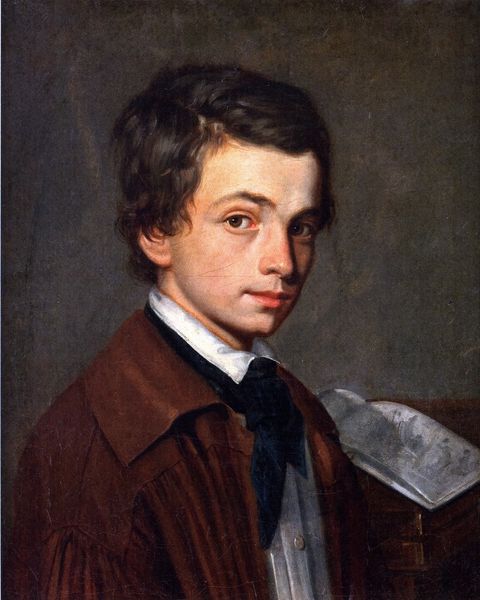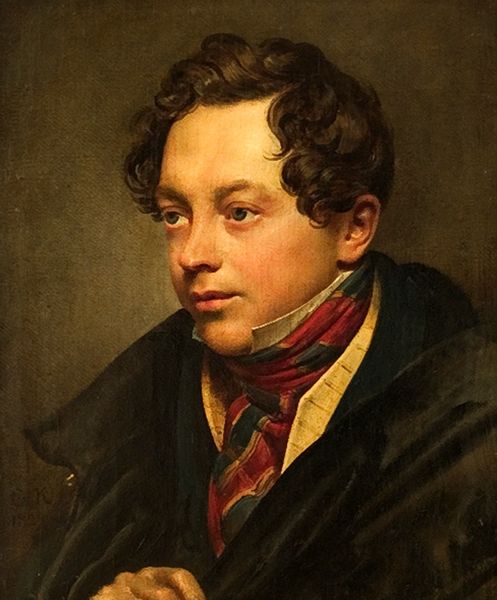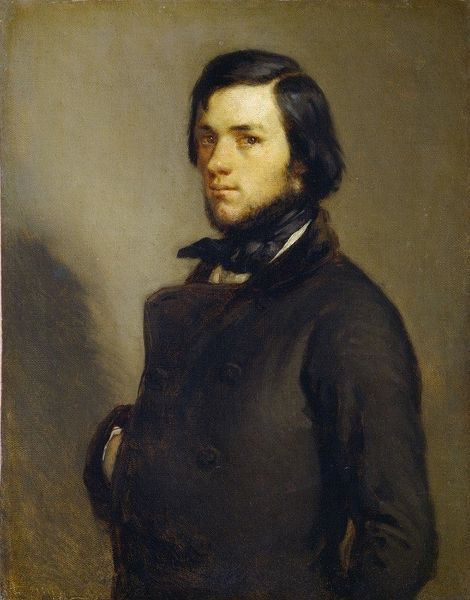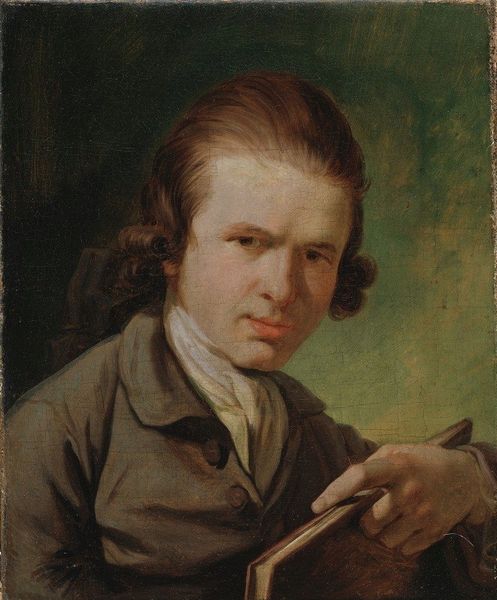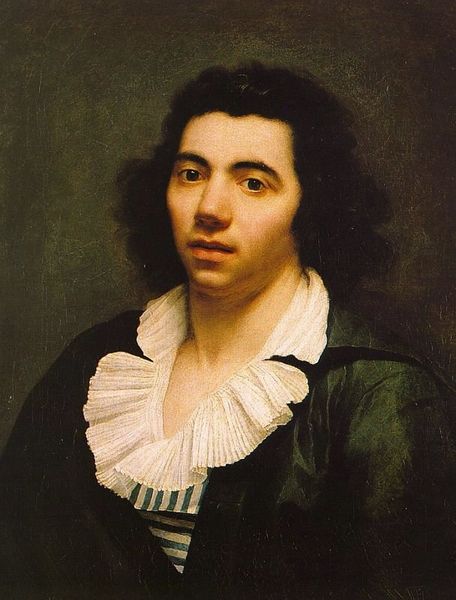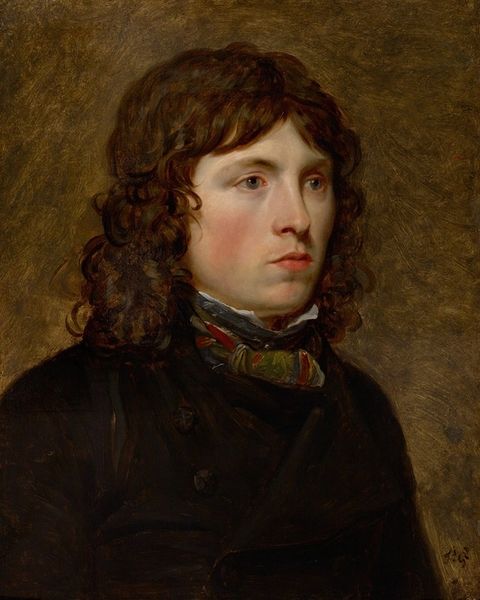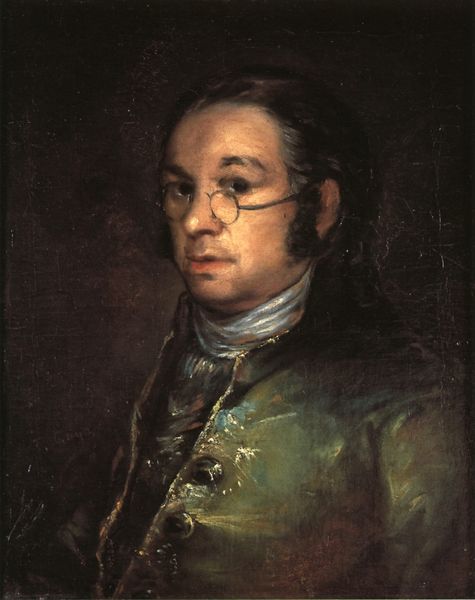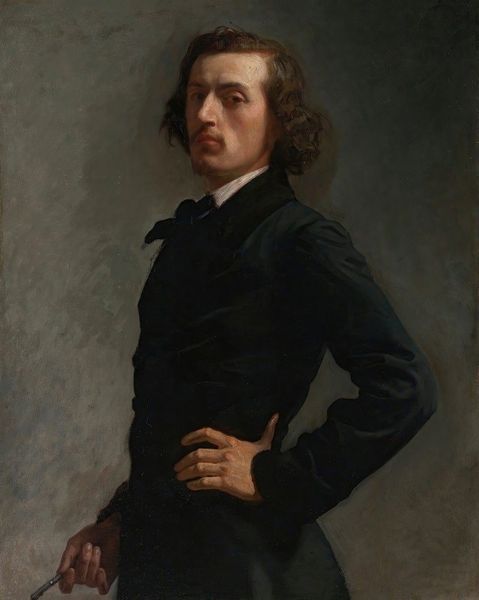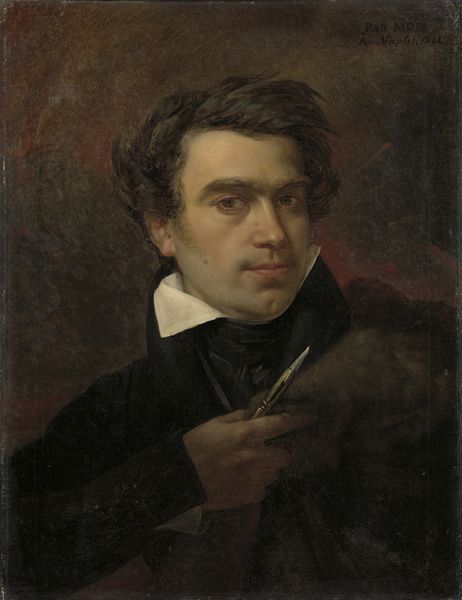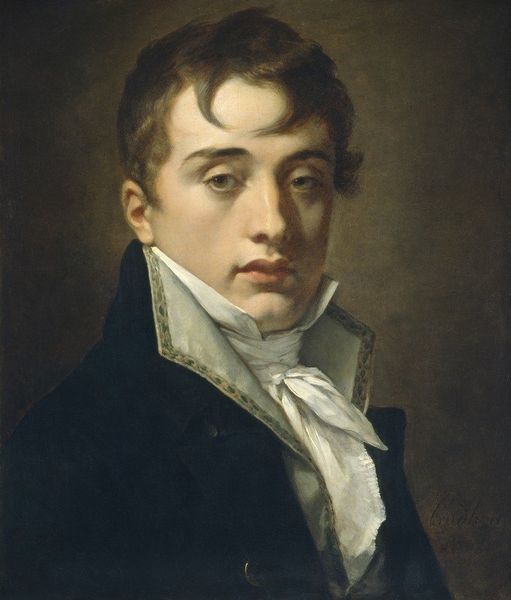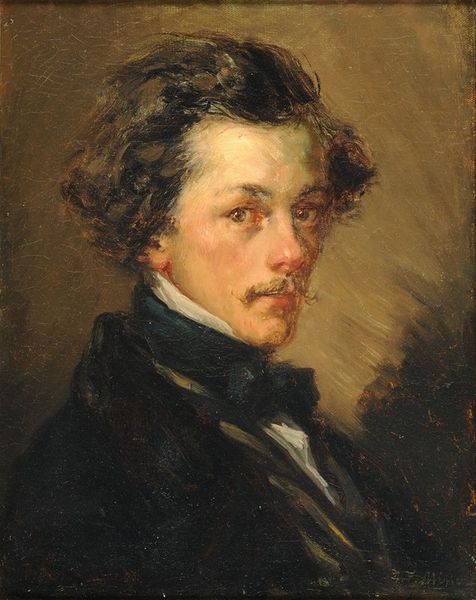
painting, oil-paint
#
portrait
#
self-portrait
#
portrait
#
painting
#
oil-paint
#
romanticism
#
academic-art
Dimensions: 46.5 x 33.5 cm
Copyright: Public domain
Editor: Here we have Alexandre Cabanel's "Self-Portrait (aged 17)," created in 1840 using oil paint. I'm immediately drawn to the intensity of his gaze; there’s a captivating self-assuredness despite his youth. What visual elements strike you most? Curator: Immediately, the artist's use of chiaroscuro commands attention, and its execution isn’t merely technical; the sharp contrasts define the very structure of his face, highlighting a compelling intersection between light and shadow. His form emerges from the darkness as if to reveal itself, which signifies its materiality. Editor: That makes me look at the face even more! There is indeed that striking contrast around his face, and you can feel a certain tension just beneath the surface, perhaps? Curator: Indeed. The controlled palette, predominately earthen tones accented by the subtle pink of his cheeks, further amplifies this tension. Examine closely how the impasto in areas such as his forehead and cheek subtly captures light. What do you read from the deliberate rendering of texture and surface? Editor: It suggests a certain concern with capturing his youthful presence with fidelity and care, right? Was this technique common for self-portraits at the time? Curator: While verisimilitude was indeed valued, the critical enquiry here resides in how Cabanel exploits artistic tools. Look to the linear elements; see how precisely they contain forms and then examine how this contributes to its reading and the emotional timbre the image gives to viewers. Does this emphasis amplify the statement that the artwork communicates? Editor: Absolutely, now I see it. By using a more subdued color palette he lets us concentrate on structure. Thanks to your explanations, it becomes obvious. Curator: Precisely. Recognizing the strategic choices concerning elements such as brushstroke, and tonality unlocks understanding beyond conventional readings. These are indicators not merely reflecting subject matter but shaping perception.
Comments
No comments
Be the first to comment and join the conversation on the ultimate creative platform.
